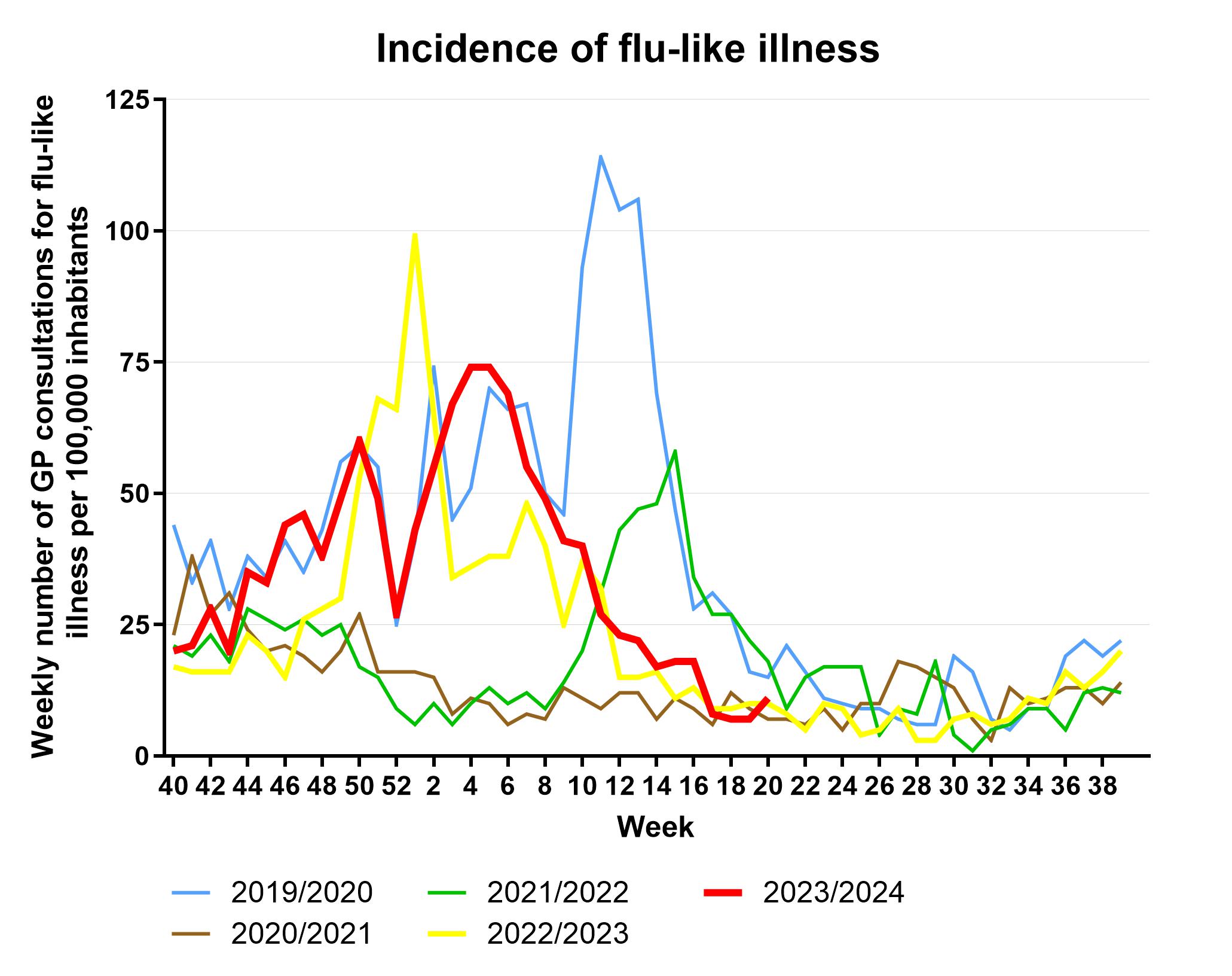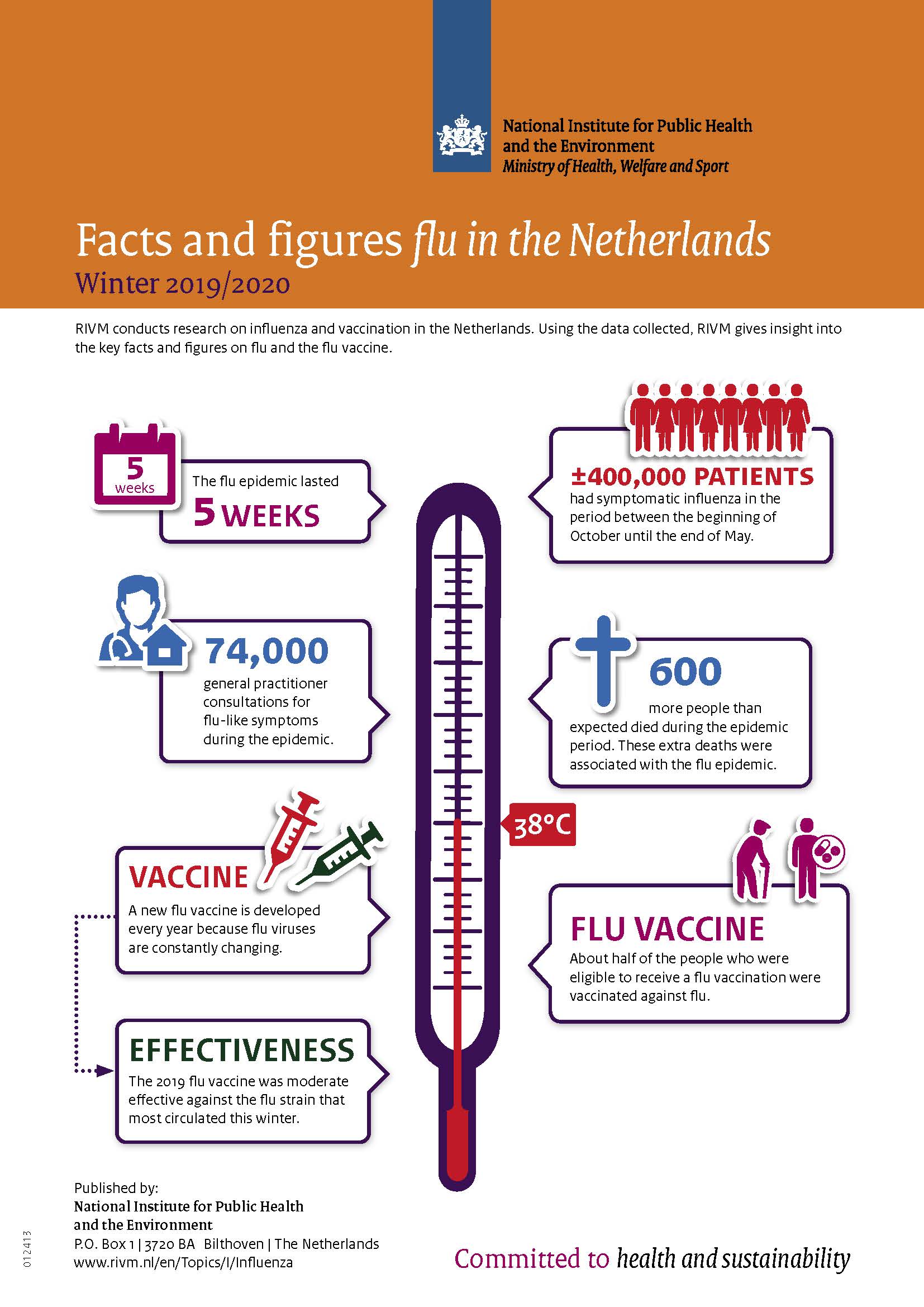RIVM conducts research on influenza and vaccination in the Netherlands. Using the data collected, RIVM gives insight into the key facts and figures on flu and the flu vaccine. Facts and figures are required to develop measures to combat flu epidemics. RIVM is responsible for mapping these facts and figures and carries out on-going surveillance in cooperation with partners.
How often do people get the flu in the Netherlands?
There are more cases of flu in some flu seasons than in others. The flu epidemic in 2014/2015 was the longest in 40 years, lasting for 21 weeks. The 2015/2016 flu epidemic lasted 11 weeks, while the 2016/2017 flu epidemic lasted 15 weeks. The long flu epidemic in 2017/2018 lasted 18 weeks, and the 2018/2019 flu epidemic ended after 14 weeks. The 2019/2020 flu epidemic was short and mild, lasting only three weeks (late January to mid-February 2020). A brief two-week resurgence of the flu epidemic in early March 2020 overlapped with the first two weeks of the COVID-19 epidemic. In the 2020/2021 winter, there was no influenza epidemic. During the 2021/2022 winter season, the number of cases with influenza-like illness consulting the GP remained relatively low (which is due to the COVID-19 pandemic a less useable source to define the influenza epidemic), the data of other influenza sources (laboratories, hospitals) led to the conclusion of an influenza epidemic in the Netherlands in week 8 of 2022. After week 20 of 2022, all influenza surveillance systems showed a declining flu trend and the late influenza epidemic was ended. Currently, from week 50 of 2022 (12-18 December 2022) onwards, there is an influenza epidemic in the Netherlands.
Source: NIVEL Primary Care Database.
Flu epidemic 2019/2020
The flu epidemic in the winter of 2019/2020 was relatively mild and lasted for a short time, from 27 January to 16 February 2020. A brief resurgence of the flu epidemic from 2 to 15 March 2020 overlapped with the first two weeks of the COVID-19 epidemic. During this winter, influenza A viruses were the most common. Of all influenza A viruses found in patients with flu-like symptoms at the General Practitioner, 49% were of subtype A(H3N2), 43% of subtype A(H1N1)pdm09 and only 8% of type B.
More information about the flu season 2019/2020 will be available in RIVM’s annual report ‘Surveillance of influenza and other respiratory infections’, which will be published in December 2020. See the infographic below for the most important facts and figures about the flu in the winter of 2019/2020 in the Netherlands.
Download the infographic Facts and figures flu in the Netherlands Winter 2019 / 2020.

